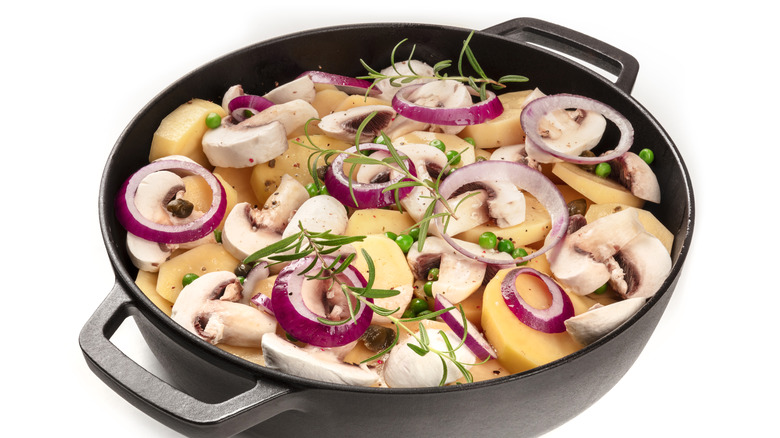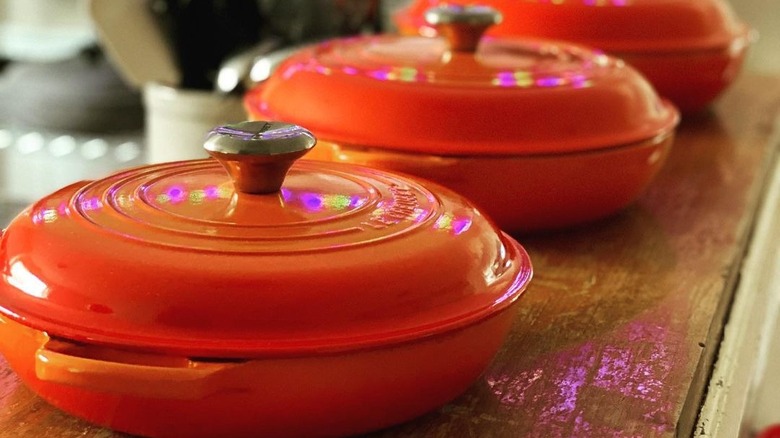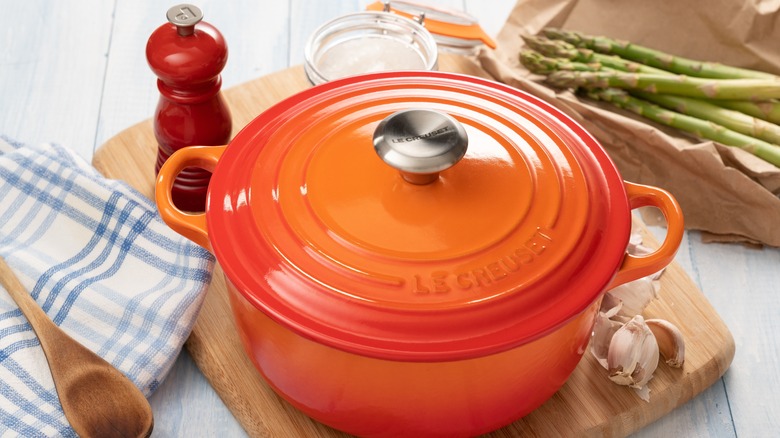What Is A Braiser And How Does It Differ From A Dutch Oven?
They're both (usually) enameled, and made with cast iron. And unless you do plenty of cooking, you can be forgiven for wondering what the differences are between a braiser and a Dutch oven — particularly if you want to buy a really good piece of cookware, and your budget will only allow you to acquire one.
There are design differences between a braiser and a Dutch oven that will dictate what you can and cannot do with either of the two. One is tall and straight, the other is shorter and broader. One is designed for dishes with more liquid, and the other has a wider surface area, making it a better choice for shallow frying or browning.
While most cooks say it's best to hold out until you can snag a Le Creuset, there are other makes out there too — and other cooks have also sworn by popular brands such as Staub or Lodge. Regardless of what you finally decide to get, the qualities of a good braiser or Dutch oven remain the same — and it is best to pick up a heavy, cast-iron pot with a tight-fitting lid. Selecting one with an enameled interior will also increase the range of dishes you can cook, since the coating will make your cookware suitable for making acidic foods, such as those with tomato-based sauces.
What is a braiser?
Even if you couldn't call a braiser by name, you'd certainly recognize one if you saw it. These are heavy-duty pans, usually made with cast iron, and come with a lid. They are wide and shallow — their sides are no more than two and a half inches high — and they are designed to execute two cooking methods: to sear and to simmer; both cooking methods are essential when you are braising a dish. They come with domed, tight-fitting lids which are meant to help promote slow cooking by locking in moisture. The best ones should technically be oven- and stovetop-safe, and should also have the ability to go from your stove or oven to the table with no fuss.
Braisers aren't one-trick ponies. Because they are shaped like skillets without long handles, a good braiser is also able to handle other tasks that include sautéing, browning, as well as shallow-frying — some even use it to cook less exciting dishes like scrambled eggs. And if your braiser can fit into your oven, you can even use it as a roasting pan or a casserole dish.
How a Dutch oven is different
It's easy to tell a Dutch oven from a braiser because the former is a taller pot with straight sides, and its walls can be as much as 4.5 to 5 inches high. That height comes in handy when you are cooking things with plenty of liquid, making the Dutch oven the perfect pot for cooking soups and stews. But this versatile pot has other uses too, like making pasta or rice, as well as baking bread. Unlike a braiser, the Dutch oven comes with a flat lid, and some come with small raised dimples that allow the lid to catch moisture and direct it back to the food.
As far as Dutch ovens go, there can only be one in the minds of many cooks — that would be Le Creuset's. Also known as the cocotte, this kitchen icon comes in several sizes. A 3.5-quart Dutch oven is adequate for a couple, a 5.5-quart one is good for a family of four, and a 7.25-quart cocotte can feed up to six.


